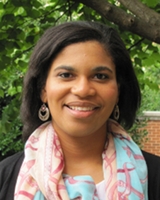2013 REU Program Participant Profiles: Rachael Ward

|
Major: Mathematics and Spanish |
What is the purpose of your research?
Spotted hyena societies, or clans, are composed of a hierarchal structure. This hierarchy allows higher-ranking individuals to have a higher priority within the clan. Using network theory, our goal is to research how the rank of individuals and the degree, number of social connections, affect reproductive fitness. We are also examining how the rank of individuals and reproductive fitness affect degree.
What does the research ultimately accomplish? What contributions to science and/or humanity does the research ultimately make?
By creating a dynamic social network model of the spotted hyena population, we want to gain further understanding of the evolution of social networks and how they affect individual attributes.
Do you have an interesting "personal side" to your research experiences?
I'm an avid user of social media sites such as Facebook. And it's interesting to see that the network theory applicable for these social media sites is also applicable to social networks among animals, particularly spotted hyenas.
What were your favorite parts of the REU program?
The best parts of the program were having the opportunity to collaborate with mentors and participants from diverse backgrounds on projects and to share experiences and create memories with them.
What new experiences did you gain that have helped you today?
Through this program, I have gained experience on doing research in the math ecology field as well as knowledge about the computer programming language, "R".
NIMBioS
1122 Volunteer Blvd., Suite 106
University of Tennessee
Knoxville,
TN 37996-3410
PH: (865) 974-9334
FAX: (865) 974-9461
Contact NIMBioS


